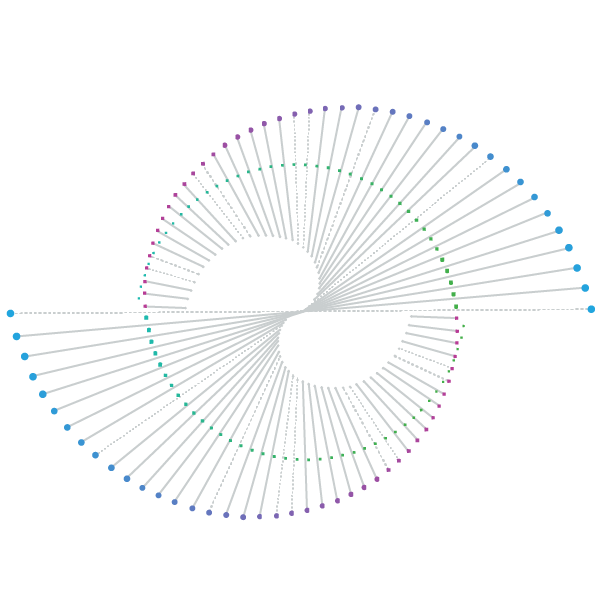Forging a path for MedTech Innovation.






















- Blogs
- The Global Orthopaedics Medical Device Market
IQVIA MedTech’s MedTech Market Monitor data reveals not only where volumes are growing but also how the nature of procedures is shifting in ways that reward innovation, localization, and strategic investment, tracking the volume of medical interventions for 950 procedures across 12 categories (general, cardiovascular, orthopaedics etc.) and 45 countries.
In this blog, we compare the dynamics of orthopaedic care across different regions, and what this means for MedTech manufacturers.
Here’s what you need to know to position your medical device portfolio for growth in 2025 and beyond.
Asia Takes the Lead – And Sets the Pace
Asia now accounts for 43% of global orthopaedic procedures—the largest share worldwide. The surge is driven by:
- Rapid urbanization and high trauma incidence
- A growing elderly population
- Increased healthcare investments in China, India, and Southeast Asia
What this means for MedTech:
The region’s high volumes in open fracture fixation (14.8%) and spine procedures (5.8%) point to strong demand for trauma devices and spinal implants. There's also rising adoption of minimally invasive techniques, creating space for advanced surgical tools and imaging solutions.
Europe – High-Tech Procedures, Stable Demand
Europe holds a 26% global share, anchored by:
- Universal healthcare access
- High joint replacement volumes (17.2%)
- Early detection and structured care for rheumatoid and osteoarthritis
What this means for MedTech:
Robotics, navigation systems, and minimally invasive tools are increasingly standard. As reimbursement pressures mount, solutions that improve surgical efficiency, reduce LOS (length of stay), or integrate data for value-based care are in high demand.
North America – Mature Market, Outpatient Shift
With 25% of global volume, North America is stable but evolving:
- Elective joint replacements dominate
- Implant removal (8.3%) reflects a legacy implant base
- Fast migration to outpatient surgery and ambulatory surgical centres (ASCs)
What this means for MedTech:
This is the proving ground for cost-effective, portable, and workflow-friendly solutions. ASCs favour devices with shorter OR time, low complication risk, and compatibility with MIS protocols.
LATAM – Trauma Volume, Growing Private Sector
At 4% share, Latin America may seem small—but it punches above its weight in trauma:
- Open reduction procedures (24.9%) are the highest globally
- Growing orthopaedic tourism and private care segments
- Uneven access to elective care across the region
What this means for MedTech:
Trauma-focused portfolios and implant removal systems remain critical. Manufacturers offering affordable, ruggedized solutions that can thrive in mixed public-private environments will succeed.
Middle East & Africa – Low Volume, High Potential
Currently representing just 2% of global orthopaedic procedures, MEA has latent demand:
- High implant removal (12.9%) and trauma-driven surgeries
- Minimal elective care outside of private urban centres
- Surprisingly high adoption of minimally invasive surgery (MIS) at 63.9%
What this means for MedTech:
There’s unmet need in trauma care and follow-up surgery. At the same time, the preference for MIS suggests demand for compact, mobile systems that can be used in resource-variable settings.
Synovectomy Trends – A Proxy for Market Sophistication
Globally, synovectomy trends show:
- U.S. leads with 37.4% of global volumes—driven by early diagnosis and aggressive surgical management
- Europe is shifting toward non-surgical, biologic treatments
- Asia is rising, backed by better insurance and access
MIS is now dominant, with the highest uptake in MEA and Asia. For manufacturers, this signals a long-term global pivot toward less invasive, more patient-friendly technologies.
Where MedTech Strategy Should Focus
- Innovation in Asia: High volume plus rising surgical complexity means there is room for all tiers of innovation.
- Optimize for outpatient delivery: North America and parts of Europe are shifting care out of hospitals—design accordingly.
- Expand trauma lines for LATAM & MEA: Focus on affordability, durability, and surgical support models.
- Accelerate MIS adoption everywhere:Even resource-limited regions are skipping open surgery—get ahead with scalable MIS solutions.
Final Word: From Access to Impact
For medical device manufacturers, the orthopaedic market in 2025 is not just about growth—it's about strategic alignment. Where aging populations, trauma prevalence, and innovation adoption intersect, there are real opportunities to lead with value-driven products and outcomes-focused care models.
Success in this space will belong to companies that can match precision with access, and scale with sustainability.
Ready to Make Smarter Market Moves?
With MedTech Market Monitor, you don’t just follow the market—you stay ahead of it.
- Objective insights across 45 countries
- Unified surgical definitions across 25+ coding systems
- Segmented volumes by surgical setting and approach (open vs. MIS)
- Robust support for portfolio planning, forecasting, and strategic targeting
Start identifying your next high-growth region or product segment—faster and with more confidence.
Click the CONTACT US button to learn how IQVIA MedTech can fuel your MedTech growth strategy.
Our Latest Thinking on Medical Technology
Digital Twins in Healthcare
Navigating China's MedTech Market
The Convergence of Medical Devices and Digital Health: What’s Next?
The Rise of Robotics in Orthopedics
Related solutions
Connected commercial solutions, maximizing market performance.





